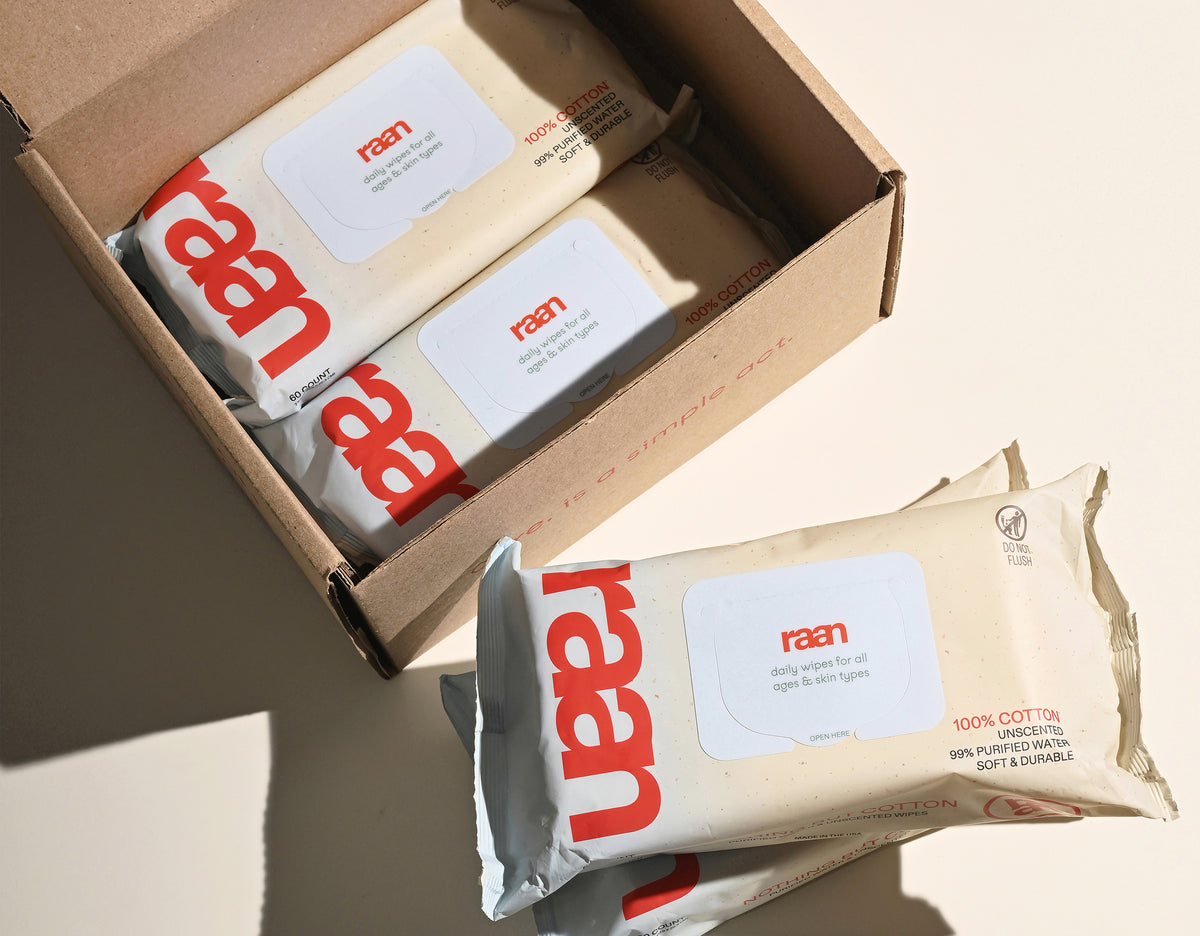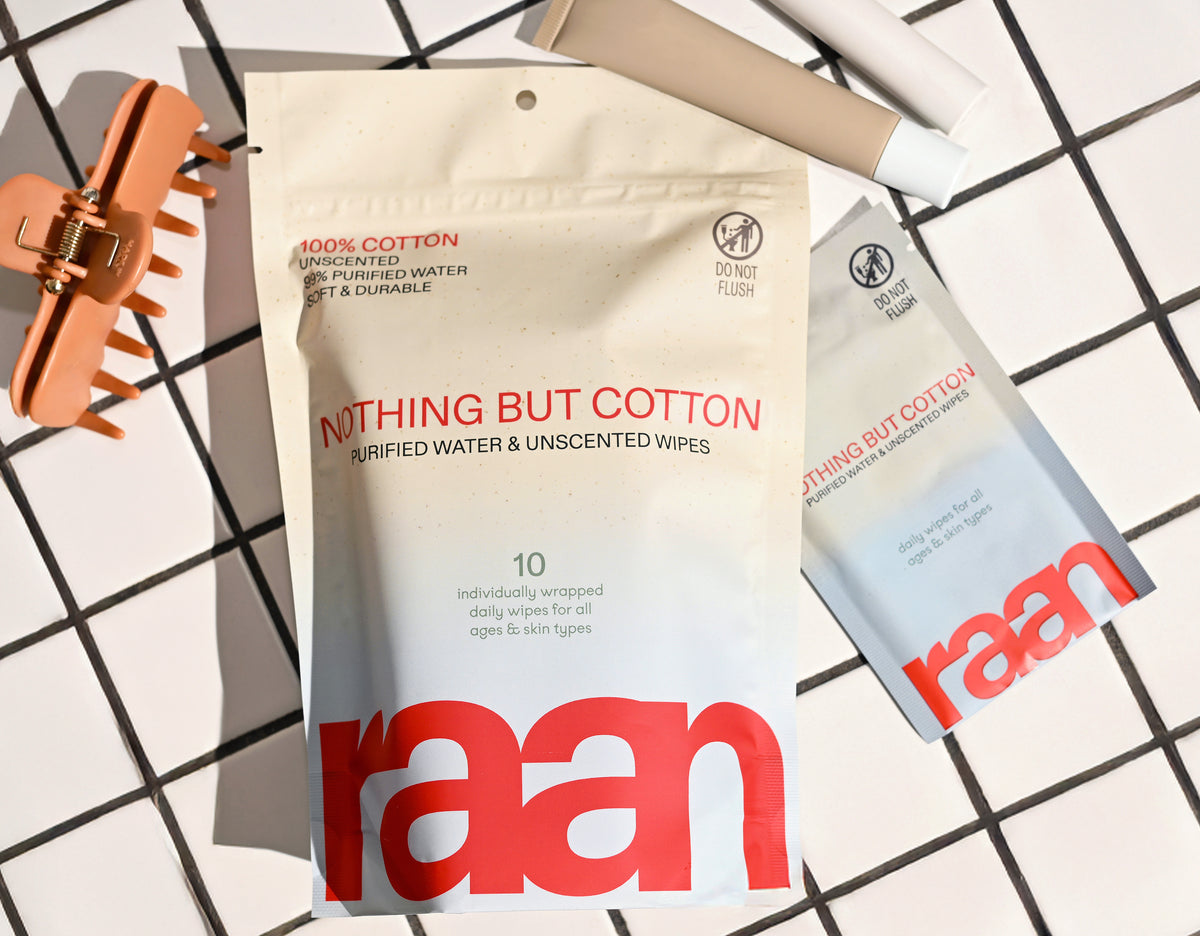Key Takeaways
- Many wipes marketed for newborns contain plastic fibers and synthetic preservatives.
- Claims of being "gentle" are often vague and unverified.
- Truly safe and transparent wipes are difficult to find.
- Parents should be cautious of misleading marketing in baby wipes.
Table of Contents
- Why "Best Wipes for Newborn" Isn't a Simple Choice
- Baby Wipes 101: The Essentials Newborn Care Demands
- Key Features That Define the Best Wipes for Newborns
- Types of Baby Wipes: Mapping the Options
- Comparing Popular Baby Wipes: Honest Breakdown
- How to Choose the Best Wipes for Your Newborn
- Safe Usage & Storage Guidelines
- Troubleshooting Common Concerns
- The Verdict: Choosing Your Best Newborn Wipes
Why "Best Wipes for Newborn" Isn't a Simple Choice
Walk down any store aisle and you'll find dozens of wipes claiming to be perfect for your best wipes for newborn needs. The reality? Most are packed with plastic fibers, synthetic preservatives, and vague "gentle" promises that don't hold up to scrutiny. After years of navigating misleading clean claims, we've learned that truly safe, transparent wipes are surprisingly rare.
The best wipes for your newborn aren't just about cleaning — they're about peace of mind. Every diaper change, every face wipe, every sticky finger cleanup matters when you're dealing with delicate skin that's still developing its natural barriers. That's why "best" means more than soft marketing claims. It means ingredient transparency, safety testing, and products built for real life's messiest moments.
Whether you're a first-time parent overwhelmed by product labels or a seasoned caregiver who refuses to compromise on safety, finding wipes that are genuinely clean, functional, and honest shouldn't require a chemistry degree. Let's cut through the noise and focus on what actually matters for your family.
Baby Wipes 101: The Essentials Newborn Care Demands

Baby wipes are pre-moistened cloths designed for gentle cleaning of delicate skin. Beyond diaper changes, they handle spit-up, sticky hands, face cleaning, and countless daily messes that come with newborn care. The best wet wipes for newborn use should be safe enough for the most sensitive areas while effective enough to actually clean.
These aren't just for new parents. Pet owners, skincare enthusiasts, and anyone prioritizing clean living relies on quality wipes for quick, gentle cleanup. The key difference with newborn-focused wipes lies in their formulation — fewer ingredients, stricter safety standards, and materials gentle enough for developing skin.
What makes wipes essential is their convenience factor. When you're dealing with a squirming baby at 3 AM, you need something that works immediately, tears minimally, and won't irritate sensitive skin. The best options balance moisture content, thickness, and ingredient safety to handle real-world parenting chaos.
Key Features That Define the Best Wipes for Newborns
Ingredient Integrity — What Touches Your Baby's Skin Matters Most
Newborn skin is up to 30% thinner than adult skin, making ingredient choices critical. The best wipes contain recognizable, food-grade components rather than synthetic preservatives, plastic fibers, or mystery "cleansing agents." Look for purified water, plant-based moisturizers like organic aloe, and pH balancers such as citric acid.
Common irritants to avoid include parabens, synthetic fragrances, bleach, alcohol, and plastic-based materials like polyester or polypropylene. Many conventional wipes contain these alongside vague "cleansing" ingredients that manufacturers aren't required to fully disclose.
The simplest test for ingredient integrity: can you pronounce and understand every component? Fewer, cleaner ingredients typically mean safer formulations and less risk of unexpected reactions on sensitive newborn skin.
Texture, Thickness & Durability — Messes Demand More Than Paper-Thin Promises
Thickness directly impacts functionality. Thin wipes tear during use, requiring multiple pieces and creating frustration during diaper changes. Quality wipes maintain structural integrity while remaining soft enough for gentle cleaning.
The ideal texture balances effectiveness with comfort — textured enough to clean efficiently but smooth enough to avoid irritation. Size matters too; larger wipes provide better coverage and reduce the number needed per cleanup.
Test durability by gently stretching a corner. Quality wipes should resist tearing under normal use pressure while maintaining their moisture distribution throughout the material.
Moisture Balance & pH Considerations
Proper moisture content ensures effective cleaning without oversaturation that can increase irritation risk. Overly wet wipes can disrupt skin's natural pH balance, while too-dry options fail to clean effectively and may cause friction.
Healthy newborn skin maintains a slightly acidic pH around 5.5. The best wipes are formulated to support this natural balance rather than disrupting it with alkaline ingredients or harsh preservatives.
Quality packaging preserves moisture consistency. Look for resealable pouches that prevent premature drying while maintaining the intended moisture level throughout the product's use.
Types of Baby Wipes: Mapping the Options
Water wipes contain 99%+ purified water with minimal additional ingredients, making them ideal for extremely sensitive skin. These prioritize simplicity but may sacrifice some cleaning effectiveness for heavily soiled situations.
Fragrance-free formulations avoid synthetic scents that can trigger reactions. However, "fragrance-free" doesn't guarantee the absence of other potential irritants like synthetic preservatives or plastic fibers.
Biodegradable options use plant-based materials that break down more readily than conventional synthetic blends. True biodegradability requires specific composting conditions — home compost piles may not achieve the necessary temperatures for complete breakdown.
| Type | Best For | Key Benefits | Considerations |
|---|---|---|---|
| 99% Water Wipes | Ultra-sensitive skin | Minimal ingredients, hypoallergenic | May require more wipes per use |
| Cotton-Based | Gentle cleaning, durability | Natural fiber, biodegradable | Higher cost per unit |
| Plant Fiber Blend | Eco-conscious families | Renewable materials, effective cleaning | Verify specific fiber sources |
| Extra-Thick | Heavy cleanup, travel | Durability, fewer wipes needed | Higher moisture content |
Comparing Popular Baby Wipes: Honest Breakdown

The best wipes for newborn care vary significantly in materials, ingredients, and safety standards. Here's how leading options stack up against real-world needs, with transparent analysis of what each brings to your diaper bag.
| Brand | Main Material | Key Ingredients | Certifications | Thickness | Best For |
|---|---|---|---|---|---|
| Raan | 100% unbleached cotton | Purified water, organic aloe, food-grade preservatives, pH balancer | EWG Verified, Women Owned, Cruelty Free, Natural Cotton | Thick | Sensitive skin, multi-use cleaning |
| WaterWipes | Viscose | 99.9% water, fruit extract | None listed | Thin | Ultra-minimal ingredient needs |
| Huggies Natural Care | Mixed fiber blend | 99% water, aloe, vitamin E | Dermatologist tested | Medium | Mainstream daily use |
| Honest Company | Plant-based fiber | Water, aloe, chamomile | Cruelty Free | Thick | Plant-focused families |
| Coterie | Bamboo viscose | 7 total ingredients | Hypoallergenic tested | Extra thick | Premium convenience |
Raan — Setting the New Standard for Newborn Safety
Best for: Parents prioritizing ingredient transparency, sensitive skin care, and multi-purpose functionality
Raan stands apart with unbleached, 100% cotton construction and just five EWG-verified ingredients. Unlike synthetic fiber blends, cotton provides natural absorbency without plastic microfibers that can irritate delicate skin. The formulation includes purified water, organic aloe for moisturizing, food-grade preservatives (sodium benzoate and potassium sorbate), ethylhexylglycerin for skin conditioning, and citric acid for pH balance.
What sets Raan apart is complete transparency about materials and process limitations. The packaging uses 70% less plastic than conventional wipes by eliminating hard plastic lids, with pouches containing 35% post-consumer waste. EWG Verified certification means every ingredient meets strict safety standards, while the Natural Cotton Seal confirms material authenticity.
WaterWipes — Ultra-Minimal Approach
Best for: Families wanting the absolute minimum ingredient count
WaterWipes focuses on simplicity with 99.9% purified water and grapefruit seed extract as a natural preservative. This minimal approach appeals to parents concerned about ingredient reactions, though the thin viscose material may require using multiple wipes per cleanup.
- Extremely minimal ingredient list
- No synthetic preservatives
- Widely available
- Thin material tears easily
- Higher cost per effective use
- Limited cleaning power for heavy messes
Huggies Natural Care — Mainstream Reliability
Best for: Families seeking widely available, moderately priced options
Huggies Natural Care combines 99% water with aloe and vitamin E in a medium-thickness format. The brand offers consistent availability and dermatologist testing, though ingredient transparency remains limited compared to specialty brands.
- Consistent availability nationwide
- Moderate pricing
- Dermatologist tested
- Mixed fiber material includes synthetic components
- Limited ingredient disclosure
- Standard plastic packaging
How to Choose the Best Wipes for Your Newborn
Selecting the right wipes requires evaluating your specific needs against available options. Start by assessing your newborn's skin sensitivity, your frequency of use, and your values around ingredient transparency and environmental impact.
Step 1: Assess Your Family's Needs
Consider your newborn's skin type first. Babies with sensitive skin, eczema, or frequent diaper rash need gentler formulations with fewer potential irritants. Factor in usage frequency — heavy users benefit from thicker, more durable options that reduce waste and frustration.
Environmental priorities matter too. If reducing plastic waste is important, look for brands using recyclable packaging and natural materials. Budget considerations should balance cost per wipe with effectiveness — cheaper options often require using more per cleanup.
Step 2: Decode Ingredient Lists
Skip marketing claims and read actual ingredient lists. The best wet wipes for newborn use contain recognizable components you'd feel comfortable having in food or skincare. Purified water should be the primary ingredient, followed by gentle moisturizers like organic aloe.
Avoid synthetic fragrances, parabens, and alcohol-based preservatives. Food-grade preservatives like sodium benzoate and potassium sorbate are safer alternatives. Be wary of vague terms like "cleansing agents" or "natural fragrance" without specific disclosure.
Step 3: Evaluate Material, Texture & Packaging
Material composition directly impacts cleaning effectiveness and skin safety. Unbleached cotton offers superior absorbency and gentleness compared to synthetic fiber blends. Test thickness by checking if the wipe holds up during normal handling — thin materials often tear mid-cleanup, requiring multiple wipes.
Packaging design affects both freshness and environmental impact. Look for pouches that seal tightly to prevent drying out, and consider brands reducing plastic waste. Raan's packaging uses 70% less plastic than conventional options while maintaining moisture integrity through smart pouch design.
Step 4: Verify Certifications & Third-Party Testing
Third-party certifications provide independent validation of safety claims. EWG Verified means ingredients meet strict safety standards, while dermatologist testing indicates professional evaluation for skin compatibility. Women Owned and Cruelty Free certifications reflect company values many families prioritize.
Avoid brands making vague claims without backing certifications. "Natural" and "gentle" are marketing terms — look for specific testing protocols and verified ingredient safety ratings instead.
Step 5: Trial & Careful Observation
Start with smaller pack sizes to test your newborn's response before committing to bulk purchases. Watch for signs of irritation including redness, unusual fussiness during changes, or dry patches after use. Healthy skin should remain soft and comfortable after wipe contact.
Track which brands work best for different situations — some wipes excel at diaper changes while others better suit face and hand cleaning. The best wipes for newborn care adapt to multiple daily needs without causing irritation.
Safe Usage & Storage Guidelines
Proper wipe usage protects newborn skin while maximizing cleaning effectiveness. Use gentle patting motions rather than harsh wiping, especially on facial areas and sensitive skin folds. Allow natural air-drying when possible before applying fresh diapers or clothing.
Application Techniques for Different Areas
For diaper changes, work from front to back, using fresh sections of the wipe for each pass. Face cleaning requires extra gentleness — use barely damp wipes and avoid the eye area entirely. Hand and finger cleaning can be more thorough, but always check between tiny fingers where residue might linger.
After feeding cleanup benefits from slightly more moisture to handle milk residue, while general freshening needs minimal product. Cotton-based wipes like Raan provide consistent performance across all these applications without material breakdown.
Storage & Freshness Maintenance
Store wipe packages in cool, dry locations away from direct sunlight. Always reseal packages immediately after use — even brief exposure can begin moisture loss. If wipes feel dry, the package seal may be compromised or the product may be past its optimal freshness period.
Proper disposal means never flushing wipes, regardless of "flushable" claims. All wipes can cause plumbing issues and environmental problems when flushed. Dispose in regular waste bins and recycle packaging where facilities accept the materials. For more on safe diaper changing and hygiene, see the CDC's diaper changing guidelines.
Troubleshooting Common Concerns

Skin irritation from wipes typically stems from synthetic materials, harsh preservatives, or fragrances. If redness or discomfort appears, discontinue use immediately and switch to a minimal-ingredient alternative. Document which products cause reactions to identify problematic ingredients.
Managing Sensitivity & Allergic Reactions
Newborn skin reactions manifest as redness, bumps, or unusual fussiness during diaper changes. Compare ingredient lists between problematic and well-tolerated products to identify triggers. Common culprits include synthetic fragrances, alcohol-based preservatives, and plastic fiber materials.
When switching products due to sensitivity, introduce new wipes gradually. Use them for less sensitive areas first, then expand to full-body use if no reactions occur. Keep a log of which brands work best for your specific newborn's needs. For a deeper dive into the science of baby skin and wipes, see this peer-reviewed medical article.
Preventing Drying & Maintaining Effectiveness
Wipes that dry out lose cleaning power and can become rough against delicate skin. Ensure package seals click or adhere properly after each use. Store packages flat rather than upright to maintain even moisture distribution throughout the stack.
If wipes become slightly dry, avoid adding water or other liquids — this can introduce bacteria and compromise the preservative system. Instead, replace with fresh packages and evaluate your storage conditions to prevent future drying.
The Verdict: Choosing Your Best Newborn Wipes
The best wet wipes for newborn care combine proven safety, material integrity, and real-world functionality. Based on ingredient transparency, material quality, and third-party verification, Raan emerges as the top choice for families prioritizing both gentleness and effectiveness.
Key Insight: The safest wipes use the fewest, most transparent ingredients. Raan's five EWG-verified components in unbleached cotton provide superior cleaning without compromising newborn skin health.
For families seeking ultra-minimal ingredients, WaterWipes offers an alternative, though the thin material may require multiple wipes per use. Mainstream options like Huggies Natural Care provide adequate performance for less sensitive skin types, while premium brands like Coterie offer luxury thickness at higher price points.
Recommendations by Family Priority
Most sensitive skin: Raan's unbleached cotton with food-grade preservatives provides maximum gentleness without sacrificing cleaning power.
Budget-conscious families: Calculate cost per effective use rather than per wipe — thicker, more durable options often provide better value despite higher upfront costs.
Environmental focus: Prioritize brands using natural materials and reduced plastic packaging. Raan's 70% plastic reduction and recyclable components lead this category.
Convenience-focused: Thick, durable wipes that handle multiple cleanup tasks reduce the need to carry different products for various situations.
Building Your Long-Term Care Routine
The best newborn wipe choice evolves as your baby grows, but starting with the safest, most transparent option establishes healthy habits from day one. Raan's multi-purpose design means the same wipes that gently clean newborn skin continue providing value for toddler messes, adult skincare, and household cleaning needs.
Frequently Asked Questions
What ingredients should I avoid when choosing wipes for my newborn's sensitive skin?
Avoid wipes containing plastic fibers, synthetic preservatives, fragrances, and bleach. These can irritate delicate skin and often come with vague or unverified safety claims. Choosing wipes with simple, food-grade preservatives and no plastic ensures gentler care for newborn skin.
Why are many baby wipes marketed as "gentle" not necessarily safe for newborns?
The term "gentle" is often used without clear standards or ingredient transparency. Many wipes labeled gentle still contain plastic fibers, synthetic chemicals, or fragrances that can irritate sensitive skin. True safety comes from transparent ingredients and minimal processing, not just marketing buzzwords.
How can I identify truly safe and transparent baby wipes among the many options available?
Look for wipes made from unbleached, 100% cotton with a short, clear ingredient list featuring food-grade preservatives and natural moisturizers like organic aloe. Certifications like EWG Verified and cruelty-free status add trust. Avoid products with vague claims or long, unrecognizable ingredient lists.
What are the key features that make a baby wipe suitable for delicate newborn skin?
The best wipes are free from plastic fibers and synthetic preservatives, made from unbleached, 100% cotton, and formulated with minimal, safe ingredients like purified water and organic aloe. They balance effective cleaning with gentle care, maintaining skin’s natural barrier without irritation or unnecessary additives.






